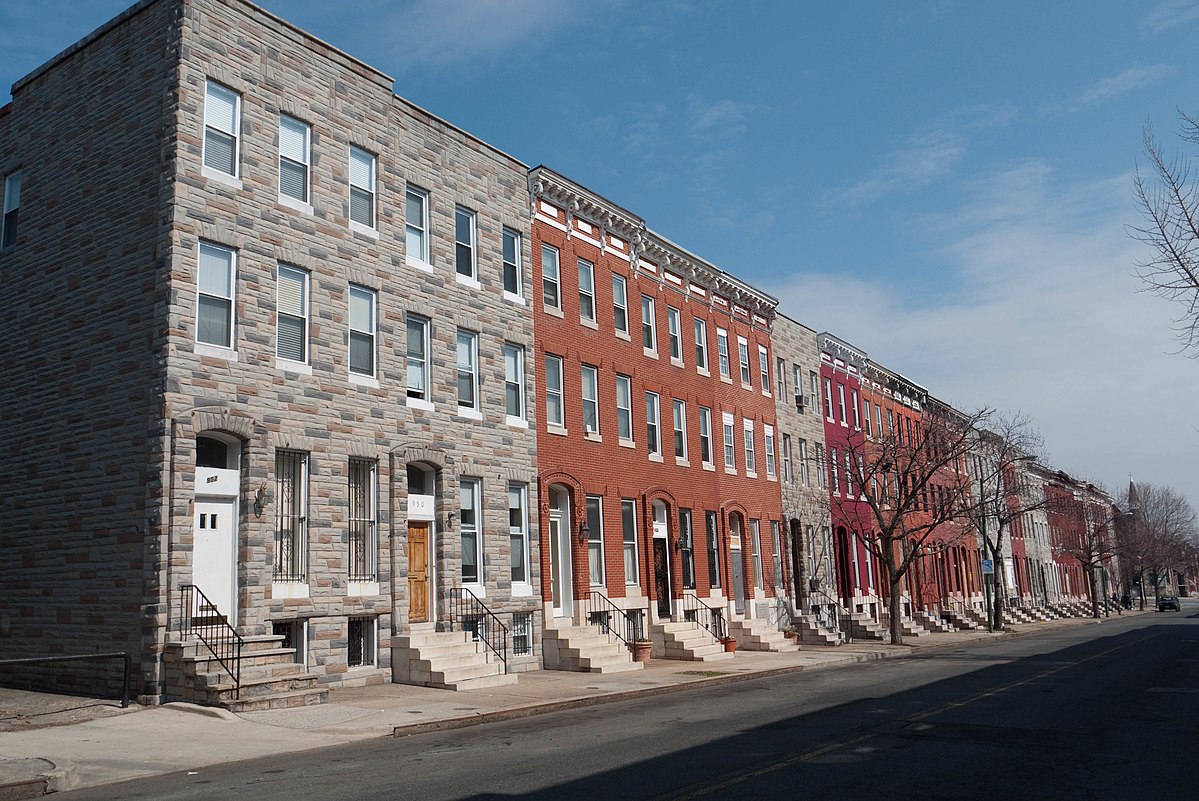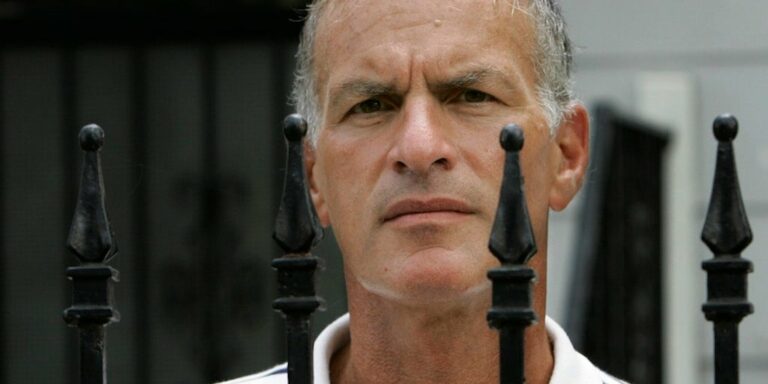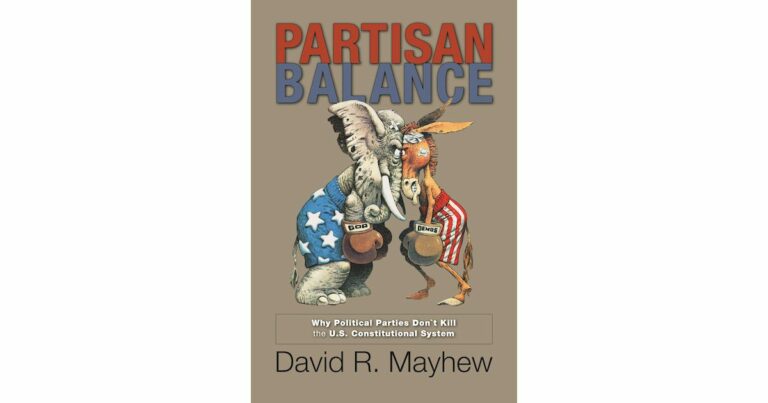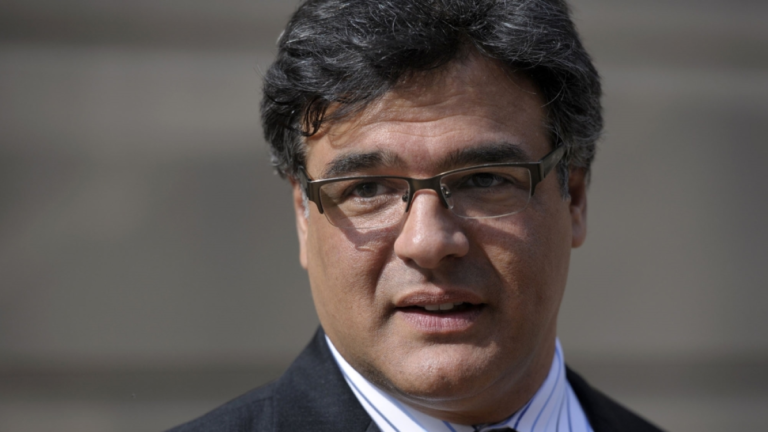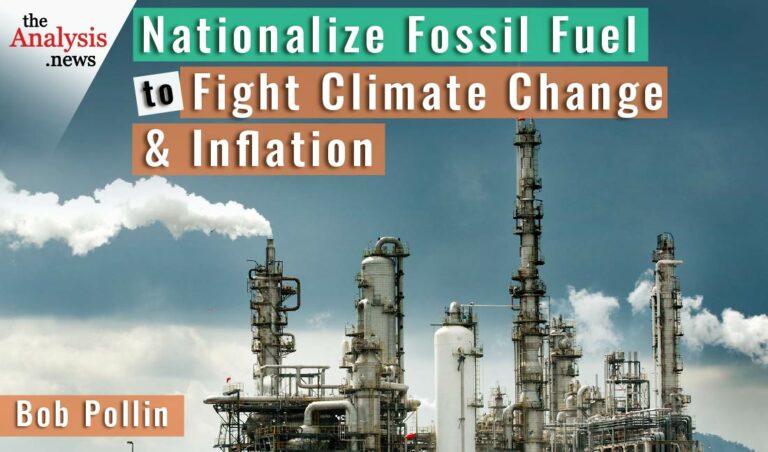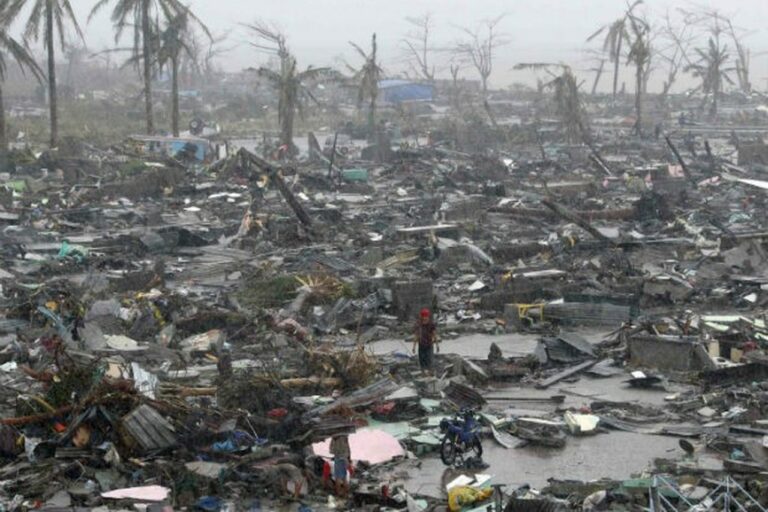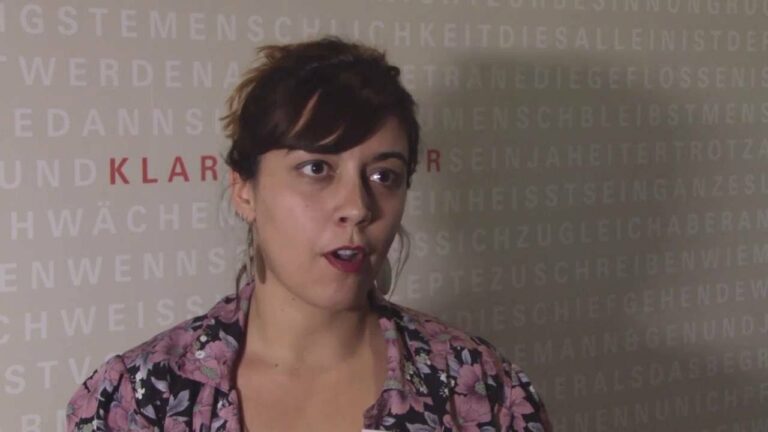What Would You Do If You Ran Baltimore Housing Policy – Marisela Gomez on RAI (pt 4/4)
This is an episode of Reality Asserts Itself, produced on January 14, 2014. Marisela Gomez tells Paul Jay that redevelopment in Baltimore must start with revitalizing the community, not to gentrify and raise real-estate values, but for the benefit of people who historically lived there.
PAUL JAY, SENIOR EDITOR, TRNN: Welcome back to Reality Asserts Itself on The Real News Network. I’m Paul Jay in Baltimore. And we’re continuing our discussion about the crisis of vacant homes and destroyed communities in Baltimore.
In particular, we’re talking about an area of Baltimore called the Middle East. Between 1990 and the year 2000, the population in the Middle East, Baltimore, community decreased by almost one-half. That’s 45 percent, the greatest decline of any part of the city of Baltimore. In 2001, the reported rate of abandoned houses in East Baltimore was 13 percent, with rates as high as 80 percent in the Middle East, Baltimore, community. This decrease in population left only approximately three out of ten houses occupied in the Middle East, Baltimore, area.
So thanks for joining us again, Marisela.
Now, the city says it’s doing some things to address this crisis. For example, Baltimore has now approved $2.5 million in public funds to spur demolition of vacant boarded-up houses. One supposes this is supposed to create the soil to nurture new houses. Of course, I suppose the question is: who’s going to be in them?
But something you said on the earlier segment, before we get into the question of what you would do if you ran housing in Baltimore: you said the EBDI, the East Baltimore Development Incorporated, had done very little for the local community. And here’s what they say in response. According to the EBDI, its economic inclusion program is second to none in Maryland. EBDI has concluded $64.1 million in contracts with minority-owned and women-owned businesses since the project’s inception. They go on to say that’s 35 percent of all the contracting in the new Eastside project. EBDI’s workforce development program and other efforts have placed more than 2,700 people in jobs, including 738 East Baltimore residents, with living wages averaging just under $11 an hour.
So they say they they’ve done something significant for the community. You don’t agree?
DR. MARISELA GOMEZ, COMMUNITY ACTIVIST AND ORGANIZER: Oh, absolutely not. Seven hundred jobs for the local community when 7,000 was promised, I don’t think it’s a lot–it’s 10 percent–for the kind of money that they have received as far as public subsidy, linked to the fact that public subsidy would provide public benefit. No, it’s not enough.
There was a plan initially signed at the beginning of the project that said it was, I think, 2 to 3 percent of all funding to this project would get redistributed back into the community for the community to determine how it would use those funds.
Two years ago, EBDI decided that that contract, which was signed by then president of Hopkins and, I think, president and maybe the chair or the president of the hospital and mayor, it was decided that that was not a legitimate document, and therefore that amount of money didn’t have to go back into the community. There are a lot of promises that were made initially when this project started in order to get off the ground and to get the public dollars to initiate it that haven’t stayed true to the promise.
JAY: Now, one of the questions you raised right in the first segment of our interview: why aren’t more people getting involved in addressing this? When you look at the population of Baltimore, it’s about 65 percent black. So when you’re saying, why aren’t more people getting involved in dealing with this, to a large extent we’re talking that the black population of Baltimore not getting involved. I mean, the majority of African-American Baltimore have jobs, do not live in these very poor areas. And to large extent, don’t they see these areas more as a source of crime? And you don’t see much of the population involved in Baltimore, engaged in trying to deal with these communities in a different way.
GOMEZ: I think you’re right, and I think this was a difficult part of what happened in 2001 when this plan was announced. So there wasn’t an existing organization to deal with this issue when it came up. There was no group of people. Like, any other community would have a community organization where people could go to find out what’s going on in their community. Where people felt that they had somebody issue around trash or a street or something like that or a house, they could go, and there was a coalition, a group of people they could take their issues to. Not so in Middle East, Baltimore, because there was such fragmentation and disruption of social capital when you’re in communities that have been disinvested. And people come inward. They don’t–they’re not collective as much anymore. This was a big issue when the plan was announced. It’s the only way such a plan could have been announced. The mayor couldn’t have brought a plan out like that to Federal Hill or Roland Park.
JAY: These are mostly white areas and very gentrified.
GOMEZ: Very–Roland Park is one of the wealthiest communities.
So when you don’t have social capital, when you don’t have a community coming together and forming a group where people feel like they are represented or there’s trust, you get these kinds of plans. So you only get these kinds of plans in a community where you think you can get away with that kind of plan.
JAY: So to a large extent the people of Baltimore were told it would be good for the communities in the poor areas. And the fact that it’s not really being executed on that way, I mean, are people aware of it generally in the community and don’t care? Or people don’t really get what’s really going on?
GOMEZ: I think my understanding in the local community is that people understand what’s going on. When I first came to Baltimore and I’d talk with people, they felt very disempowered. They felt like it’s–people would say it’s hard to fight–you can’t fight the giant.
JAY: Excuse me. There’s a siren. But that’s part of Baltimore.
GOMEZ: People would say you can’t fight the giant. So there was a very huge sense of disempowerment. People didn’t feel they had their agency, so to speak, their capacity to challenge something as big.
JAY: Alright. Well, let’s shift the conversation. Let’s say sometime in the near future there’s a mayor that you support, there’s a city council that more or less agrees with you. There’s even a governor that more or less agrees with you. And they come to you and say, okay, you’re now the head of housing for Baltimore or you’re the secretary of housing for Maryland. What would you do? How would you deal with the issue of Middle East, Baltimore?
GOMEZ: Well, with Middle East, Baltimore, I think there’s still–I am a hopeful person. I think there still is time to do it differently. And if the conditions were right, as you just described, I think it would be a great example to show what we could do different if we were all on the same page together.
So what could we do differently? We could make sure that the community felt invested in this. For me, the biggest part of this is that the community that lives there has historically been there, has not felt like this is for them, that they’re not valued or respected in this process.
The first thing I would do would find a way to remedy that, so that people everywhere feel–in this community felt like this revitalization was their revitalization.
JAY: But don’t–there’s a lot of people who have invested in real estate in this area. It’s not just Hopkins. There’s a lot of private speculation going on.
GOMEZ: Absolutely.
JAY: And anyone that owns property now anywhere in that area, they want this depopulation to continue. They want the gentrification. You know, they want to change the class and racial character of this neighborhood, ’cause they’re going to make money out of their real estate speculation. So your policy, to do what you’re saying, to give real community involvement, you’re going to have to be in a battle with all these people, wouldn’t you?
GOMEZ: Well, you–initially, absolutely it would be a battle, because you’re dealing with a mentality that is about greed and consumption and exploitation. So, yes, initially it would be a battle. But you just gave me a governor, a mayor, and a city council who said that they’re different, which means that the ease of getting permits to do building would change. The way that I would be subsidizing these speculators and these builders would change.
So the whole playing field would change. We wouldn’t be dealing with the same kind of quick and readiness to bring in a certain group of developers who want to follow that same bottom line as what we’re following now. So all that way would already start to change the dynamic of who would be at the table. If people wanted to develop in Baltimore, they would realize that they would have to develop in a certain way. They would have to develop with the community in mind. They would have to respect the existing community.
And the community would feel part of–you wouldn’t–you know, a lot of the crime that we see is just people acting out because they feel disrespected. It’s not just that, and I by no means condone it, but what I’m saying is that if we really look at the ideology, the cause of the crime and the insecurity and the lack of community that we have today, it comes from something much deeper, something that we have been harboring for over 100 years. It’s not just the last ten years. It’s not just because there’s an abandoned house or there’s 40 percent abandoned houses or 80 percent. This is a continuous social policy, a social norm that we have allowed to proliferate and grow in America.
What I’m saying is that if we really have the kind of people that you say are in the positions of power that can use government like it was supposed to be used, which is a way of having checks and balances–we have no checks and balances now. We have exploitation of the poor and we have resourcing of the wealthy. How else in America could you give $1.35 million to develop a private hotel, to help with the design, when you have so many homeless people in the same community?
JAY: To rebuild these communities, one, you have to take on the speculators and stop those kinds of subsidies. But you also have to deal with how people earn a living in those communities.
GOMEZ: Absolutely.
JAY: How do you do that?
GOMEZ: You–look, there was a great project, right, in the 1960s, the [incompr.] Street development project right next to Hopkins, all in East Baltimore. That was a different project. Okay? You want to find out how to do housing and do it differently but add in an economic plan–that was a plan where they had about 15 or 20 community meetings, where people came to the table from the community. People were actually surveyed. They were asked what kind of housing do they want to see, what kind of businesses do they want to see. They–what–do you want [incompr.] change. You’d have people involved, right?
You’d add an economic plan. So here’s a very small example. The people who–the community people actually formed a nonprofit. One of the CDCs formed. And they became part–they got money from the government, and they become one of the developers. They built low-income apartments where people live. It’s still there [incompr.] It’s still there. That was from the ’60s. Don’t tell me that there are not examples out there of how we can do things differently.
The piece that was missing, in my opinion, from that project was an economic plan. And how do we get at that? Well, you’ve got this institution that claims itself to be an economic anchor. Well, then do that. And I don’t mean do that with low-wage jobs and do that with subcontracting so you don’t have to pay benefits. I mean do that in a way where you are benefiting the community, that you’re actually looking at how many people in your community are unemployed and you’re actually participating with government to make sure that the community that–if it’s really a part of your community, you’re going to work to make sure that community is okay.
JAY: Yeah, you’d think it’s a no-brainer. There’d be a massive training program for the local residents.
GOMEZ: Exactly.
JAY: But if you want to get rid of local residents, then you don’t want a massive training program.
GOMEZ: That’s right. Why don’t we have vocational training in East Baltimore? Ms. Lucille Gorham, who passed, who was a vibrant community leader her entire life in East Baltimore, I remember long ago she said, I don’t know why they don’t put vocational training programs in this community. You’ve got this big institution here. Why aren’t you training this community so they can go right in and benefit with jobs where they can actually get wages and life insurance and health insurance and have stability to buy that house that they’re renting now? Why aren’t we more symbiotic? Why aren’t we working together?
JAY: So what’s the answer to that? The answer is there’s a lot of money to be made by not doing that.
GOMEZ: Yeah.
JAY: The direction they’re going in, a few people are going to make a lot of money.
GOMEZ: And we’re very separatist who are in this country, right? We live in silos, right? So I’m Hopkins and this is the community. They don’t look like me. I don’t look like them. What do I do? I take care of what looks like me. I don’t take care of what doesn’t look like me. This is an ingrained philosophy, and it’s very deeply embedded within us in this country. So as long as we continue to think that they’re different than I am, I will never do something to benefit them.
JAY: There’s another part to this, is there? And, of course, you know, we played this little excerpt of The Wire in the beginning of part one. And I know that gets exaggerated, that that isn’t all of Baltimore, but the drug culture is a big piece of these poor areas of East and West Baltimore, and there’s a lot of money in the war on drugs. There’s a lot of money selling drugs, but there’s also a lot of money in suppressing, supposedly suppressing drugs, you know, from cops to lawyers to the prison complex and so on and so on. I mean, if you do have this situation where you’re–you know, you’ve got the governor and the state assembly and the city council and so on and so on that we set up as the assumption of this conversation, you’ve got to take that on, don’t you? You have to take on this whole–
GOMEZ: Absolutely.
JAY: –this whole complex of the drug industry.
GOMEZ: You have to–well, really, you have to take on everything that makes a community whole. And that’s not just housing and health. That’s transportation. That’s safety. Right? That’s recreation. That’s spirituality. That’s education. We have to take every single thing on. Nothing can be left behind, ’cause it’s a network. It’s a matrix, right? It all holds together. If you drop one, then it’s not whole.
So I certainly would take on juvenile justice system. At one point I was the director of the–yeah. Is that right? I was the medical director of the juvenile justice system for the state of Maryland. You know, how did I take that on? Well, I didn’t have all those conditions that you supported earlier. And it was very difficult.
But what I would do and what we wanted to do was go away from the punitive way that we treat our young people, because we know it doesn’t work. We know that we have to bring education, we have to rehabilitate, we have to look at why is it that they keep coming back. We don’t do that. You know, look, the mayor wanted to build or now our governor wanted to build a new jail.
JAY: A youth prison.
GOMEZ: That’s right, to continue the same punitive things that don’t bring the outcomes that we say we want. So, you know, when people tell me, oh, we’re addressing crime with the juveniles, no, we’re not. We’re not really. We’re just–we’re doing the same thing of separate. We’re saying, you’re different, you’re bad, I’m good. What do I do? If I lock you up, you’re going to go away.
And what we see is it does not work. This example with this expansion of Hopkins is exactly an example that it doesn’t work. Hopkins continues to build its walls. It expands itself. It puts not walls in bricks and mortar; it puts security, off-duty policeman on duty as its walls in this community. When you speak to residents, all they say is they’re pushing–all they’re doing is pushing the crime. They’re not doing anything about the drug and the crime. All they’re doing is pushing it away from them. All they’re doing is creating a little fiefdom, a little place for them to feel–.
JAY: A big gated community.
GOMEZ: That’s right. It’s a gated community. That’s what we’re doing. We’re not addressing the issues that are there.
JAY: Okay. What we’re going to do is invite somebody from Hopkins to come.
GOMEZ: Absolutely.
JAY: And you’ll come back.
GOMEZ: Absolutely.
JAY: And we’ll see if we can get the president of Hopkins, Daniels or someone like that, and we’ll get them to make their case and explore this further.
So this is just the beginning of a process. We hope to delve into many of the issues facing the people Baltimore–and partly it is a microcosm of what’s facing many cities across the country–and begin this discussion about what would solve this these issues, solve these problems in the interests of the majority of the people of the city. And pretty soon we’re going to have our big studio ready, so we’re going to be having town hall debates and discussions about all of this. And we hope it leads to a different vision for Baltimore.
Thanks very much for joining us.
GOMEZ: M’hm. Thank you for having me.
JAY: And thank you for joining us on Reality Asserts Itself on The Real News Network.
“Marisela B. Gomez is a community activist, author, public health professional, and physician-scientist. She received a BS and MS from the University of New Mexico in Albuquerque, a PhD, MD, and MPH from the Johns Hopkins University. She spent 17 years as an activist/researcher or participant/observer in East Baltimore during and after training at the Johns Hopkins Schools of Medicine and Public Health. Past and current writings address social determinants and health, social capital and urban health, disparities in mental health care in incarcerated populations, disparities in substance use treatment, mental health care in the primary health care setting, community organizing and development, and mindfulness practices in organizing.”
